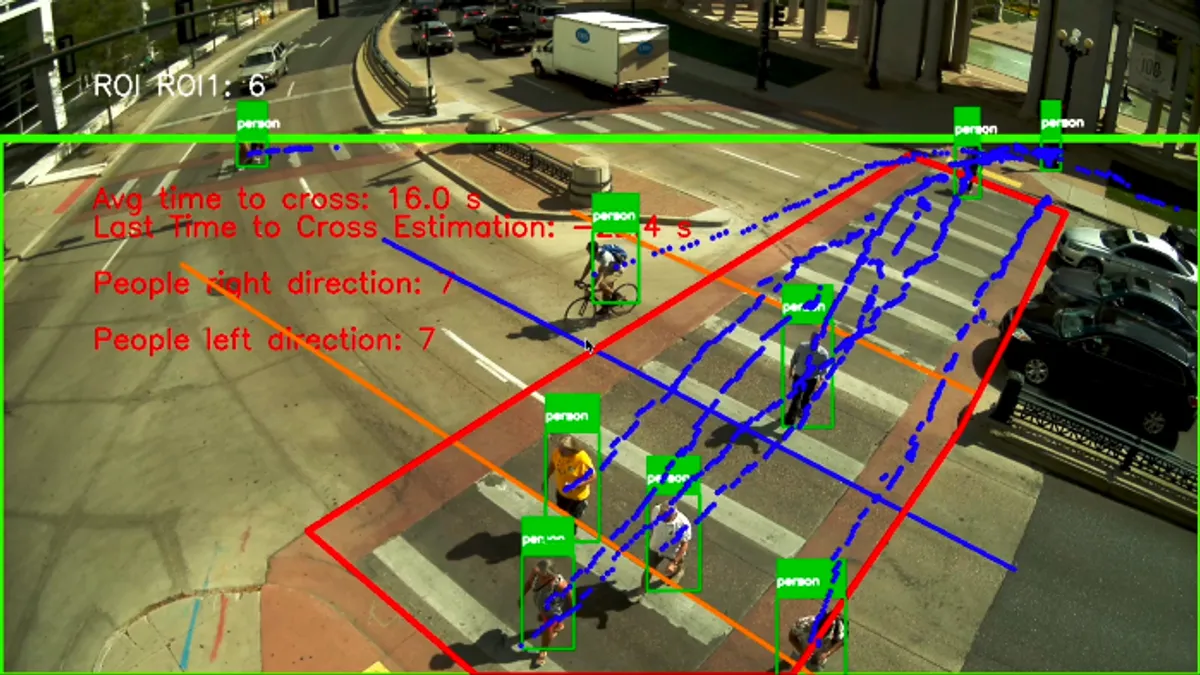Dive Brief:
- Traffic crossings in Denver will use an artificial intelligence (AI) platform to boost safety under a partnership announced last week with internet of things (IoT) hardware and software company Boulder AI.
- A series of cameras — both in the intersection and at its periphery — monitor pedestrians and the various objects that pass through the crosswalks, including bikes, wheelchairs and baby strollers. The cameras assign speed vectors to everything in the intersection and predict trajectory to determine pedestrians' intent to cross. The technology can then respond to this prediction in as little as 10 milliseconds to adjust the timing at the crosswalk.
- The partnership follows a federal grant issued to the City of Denver to address traffic congestion and safety under the Advanced Transportation and Congestion Management Technologies Deployment Program from the Federal Highway Administration (FHWA). Already, Boulder AI deploys its tech in downtown Denver to manage traffic and pedestrian flow before and after major events.
Dive Insight:
Pedestrian deaths recently reached their highest rate in 30 years, according to the Governors Highway Safety Administration (GHSA). As cities try to get that figure under control, smart intersections that leverage technology are seen as a key solution.
In 2018, Detroit unveiled what was touted as the "World's Smartest Intersection," with a system of sensors, 360-degree cameras, connected traffic signals and remote, real-time monitoring capabilities. Meanwhile, a study last year said intersections will be key in helping cities get the full benefits of autonomous vehicles (AVs). And in a wireless testbed in New York City, researchers from Columbia University and a bevy of partners are experimenting with smart intersection technology that uses sensors to collect data and video feeds from the street below.
One of the major stumbling blocks for this technology has been determining whether someone’s intent is to step into an intersection or into the street, and whether the technology has the compute power to react in time to avoid an accident. Boulder AI Founder and CTO Darren Odom told Smart Cities Dive the use of speed vectors to predict trajectories can solve this problem.
"Basically, as someone is entering the intersection, we know that there's a probability that they're not going to stop given the prior trajectory," Odom said. "Someone who's running and not changing their cadence, and this is really similar to how [people's] vision works, we're going to make assumptions about how that person is going to be in the next second."
While the growth of IoT sensors and other monitoring devices may raise privacy concerns, Odom said Boulder AI's cameras only measure pedestrian activity and only store metadata on the devices themselves. The goal, he said, is for multiple city departments to have access to that intersection data for various planning purposes, though given some city silos, he said it can sometimes be an "uphill battle."












